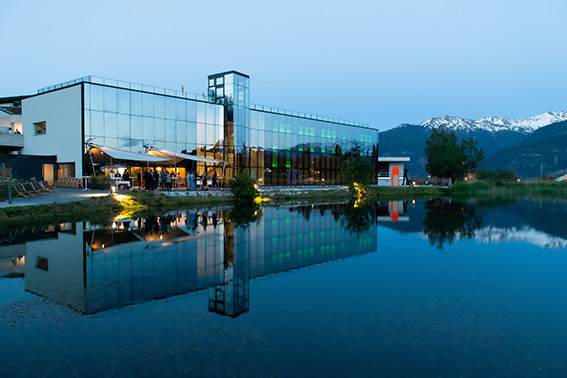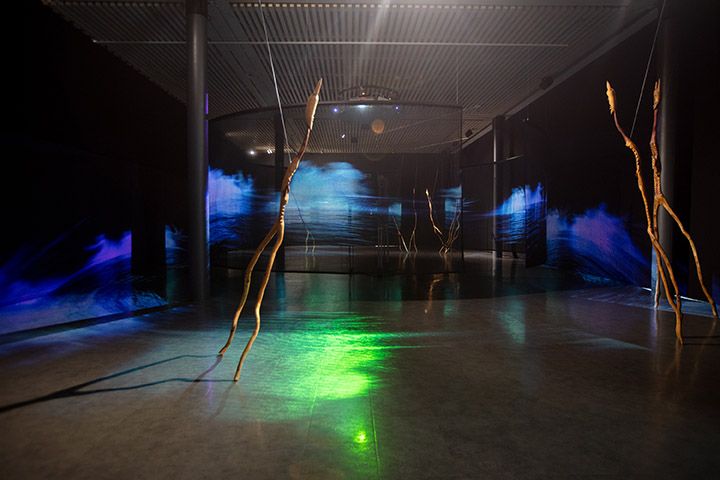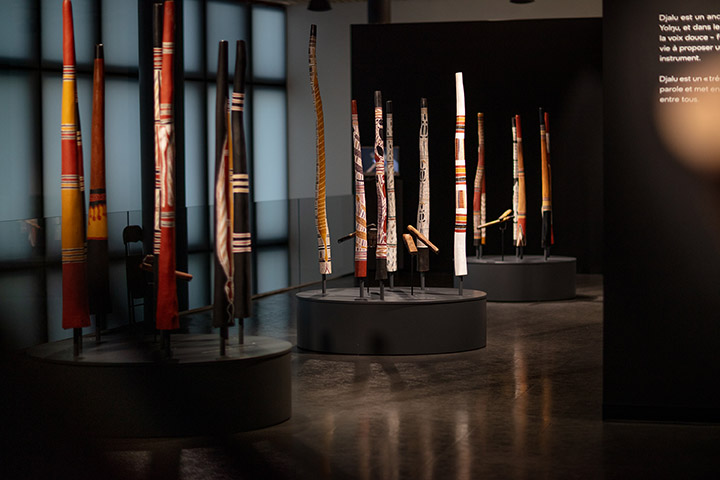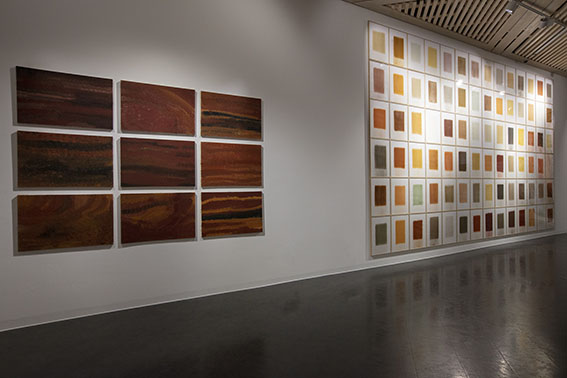Bérengère Primat discovered Aboriginal art 20 years ago on a visit to an exhibition in Paris and immediately became passionate about it. She set up the Fondation Opale in Lens in 2018, in a bid to help make this art more widely known in Europe. Here she talks to us about the place it occupies in the contemporary art landscape, about the Fondation Opale, and the forthcoming exhibition.
Unlike Obélix who fell into the druid’s cauldron of magic potion and under a spell when he was a child, you did not encounter Aboriginal art until you were older. What is it about this art that so resonates with you?
Bérengère Primat Indeed, I discovered this art form exactly 20 years ago, when visiting an exhibition in Paris, Wati – The Law Men. I was blown away by these works of art created by men from all over Australia; it was as if a part of me, as a human being, was revealed to me. Beyond the art itself, it was my meeting with Aboriginal artists and their families that changed my life and motivated me to set about creating the Fondation Opale four years ago.
 Fondation Opale, Lens 4 June 2019 – Photos © Fondation Opale
Fondation Opale, Lens 4 June 2019 – Photos © Fondation Opale
What accounts for the success of this artistic movement today?
BP I’ve noticed a growing interest for several years now, and I think one positive aspect of the pandemic has been to reconnect us to the more important values of family, nature and our environment. Aboriginal works deal with these themes, visual representations of sung poems, from the oldest continuous culture in the world; 60,000 years of uninterrupted teaching.
The Internet and social networks also make it easier to be connected to the other side of the world and to follow what is going on there artistically. Aboriginal artists are constantly finding new forms of expression and are active in all artistic spheres today. There are even NFTs created by artists from Buku-Larrnggay, an art centre in Northern Australia! It seems to me that the social impact has also to be taken into account. It is often the only source of income for these Aboriginal communities.
Emily Kame Kngwarreye is without doubt one of the world’s best known Aboriginal artists. Her painting Earth’s Creation held the world record for a while for the most expensive work by an Aboriginal artist. How do you view her and her work?
BP Emily was an exceptional artist, one of the first women to paint on canvas in the desert, at the age of 78, having previously done batik. In just eight years she went on to create over 3,000 paintings and posthumously represented Australia at the 1997 Venice Biennale. One of my regrets is that I never had the chance to meet her, yet I think I know her work so well that I feel she a close friend of mine. In these paintings, Emily, nature’s colourist, depicts her territory, in the different seasons and at different times of the year, as well as the intertwined rhizomatic system of the yam (Anooralya), her totem.
The Fondation Opale wants to promote dialogue between Aboriginal and contemporary art, and be a place for exhibitions, encounters and research. Does such a project fill a gap in the European cultural landscape?
BP Let me reformulate your question, if I may: the raison d’être of the Fondation Opale is to raise awareness and recognition of contemporary Aboriginal art as an important movement in its own right in the contemporary art world. Although its history is, of course, very different to that of contemporary Western art, for example, I am convinced that its relevance, its power to connect, speaks to everyone, in Australia and throughout the world, and is an instrument for dialogue around universal themes. And the coming together of Aboriginal works with those of contemporary artists from other geographical and cultural origins serves to strengthen them both.
As for the European landscape: there are excellent institutions dedicated to non-European cultures. But in terms of the visual arts and Australian First Nations, there was indeed a gap to be filled after the closure of the Aboriginal Art Museum in Utrecht in 2017. Together with our peers, we are playing a part in ending the Eurocentrism that still exists and we are contributing to a critical discussion about the ‘modernity’ of our society and concepts.
Then, for Aboriginal communities, it is important to have a trusted platform that allows them to present their contemporary work on a permanent basis in Europe, a place for visiting artists on research trips or in residence.
 Breath of Life exhibition – Photos © Fondation Opale
Breath of Life exhibition – Photos © Fondation Opale
Opened in 2018, the Fondation Opale is the only contemporary art centre dedicated to the promotion of Aboriginal art in Europe. How will the cultural offer be presented?
BP Our exhibitions and also the numerous events (conferences, concerts, performances, etc.) in our accompanying programme all have the same ambition of artistic excellence, accessible to the general public, and these two things are not contradictory. Our programming is demanding, however, our communication and our cultural interpretation, in particular, aim to make all we offer intelligible and understandable to everyone.
With Aboriginal art as the main theme, breaking down the barriers of geographies and artistic disciplines, as well as opening up to partners who share our values, will continue to be the Fondation Opale’s hallmark for the long term.
 Breath of Life exhibition – Photos © Fondation Opale
Breath of Life exhibition – Photos © Fondation Opale  Resonances – Photos © Fondation Opale
Resonances – Photos © Fondation Opale
Could you say something about your next exhibition?
BP A careful examination of shamanic-looking youthful drawings, preserved in the Yves Klein Archives in Paris, which historians had previously been unsure what to make of, recently led to their being recognised as reproductions of Aboriginal works. With this new insight, our exhibition Dreaming in the Dreams of Others (10 December 2022-16 April 2023) aims to open up a sensitive, poetic path towards this primordial brotherhood of consciousness, evidence of which only artists can reveal.
Dreaming in the Dreams of Others juxtaposes the work of Yves Klein with that of twelve Aboriginal artists, putting forward the thesis that arguably the most influential French artist of the second half of the twentieth century may well have been the first European artist to take an explicit interest in Aboriginal visual art… he was a trailblazer in short, as he was in many fields.
More info: https://www.fondationopale.ch/